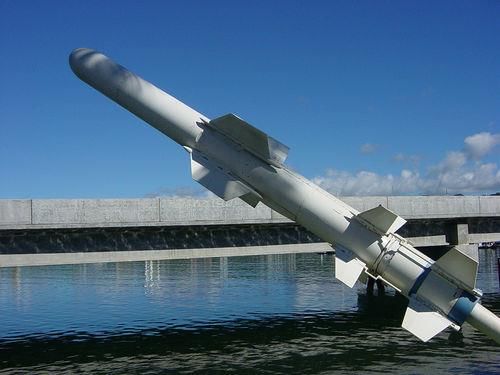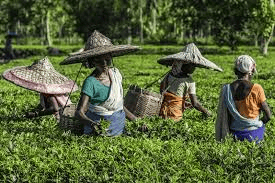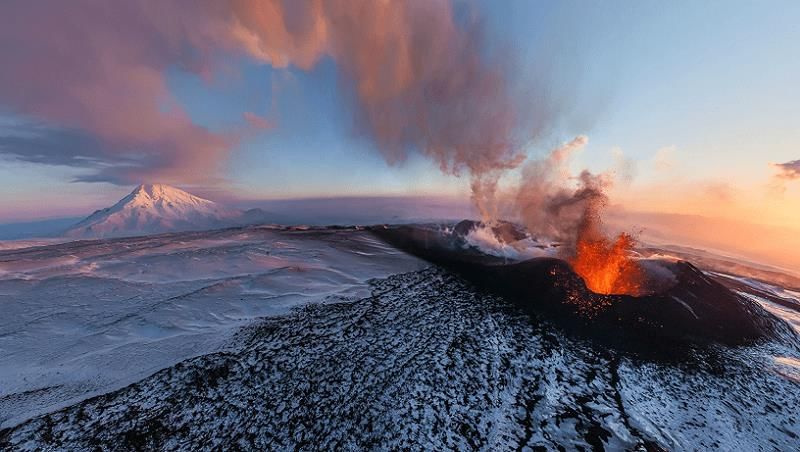UPSC Daily Current Affairs- 1st October 2024 | Current Affairs & Hindu Analysis: Daily, Weekly & Monthly PDF Download
GS3/Economy
What are White Goods?
Source: Financial Express
Why in News?
The Department for Promotion of Industry and Internal Trade (DPIIT) has recently encouraged manufacturers of white goods to participate extensively in order to take advantage of fiscal incentives under the Production-Linked Incentive (PLI) scheme tailored for this sector.
About White Goods:
- White goods refer primarily to large household appliances, including items such as stoves, refrigerators, freezers, and washing machines.
- Initially, these products were only available in white, which led to their designation as white goods. However, contemporary versions come in various colors yet are still commonly referred to as white goods.
- In a broader context, white goods can also encompass products made from fabrics like linen or cotton, which are white or light-colored. This category includes household items such as curtains, towels, and bed sheets.
- In the alcoholic beverage industry, the term white goods is used to describe colorless spirits, which includes drinks like vodka and gin.
GS3/Economy
Cruise Bharat Mission
Why in news?
Recently, the Union Minister of Ports, Shipping & Waterways (MoPSW) launched the ‘Cruise Bharat Mission’ from the Mumbai port.
About
- Cruise Bharat Mission: The initiative aims to enhance the immense potential of cruise tourism in India, targeting to double the number of cruise passengers by 2029.
- Implementation Timeline: The mission will unfold in three phases, commencing from October 1, 2024, and concluding on March 31, 2029.
- Phase 1 (01.10.2024 – 30.09.2025): This phase will prioritize conducting studies, master planning, and establishing cruise partnerships with neighboring countries. It will also involve modernizing current cruise terminals, marinas, and destinations to optimize cruise circuits.
- Phase 2 (01.10.2025 – 31.03.2027): This phase will focus on constructing new cruise terminals, marinas, and destinations to activate areas with high cruise tourism potential.
- Phase 3 (01.04.2027 – 31.03.2029): The final phase will work on integrating all cruise circuits within the Indian Subcontinent, marking the advancement of the cruise ecosystem while continuing to develop related infrastructure.
The mission identifies key initiatives across five strategic pillars.
- Sustainable Infrastructure & Capital: This pillar aims to bridge infrastructure gaps by developing world-class terminals, marinas, water aerodromes, and heliports. It emphasizes digitalization (e.g., facial recognition systems) and decarbonization (e.g., shore power). It includes creating a National Cruise Infrastructure Masterplan 2047, establishing a cruise-focused Special Purpose Vehicle (SPV) under the Indian Ports Association (IPA), and launching a cruise development fund.
- Operations Including Technology Enabled: This initiative is designed to enhance operational efficiency, ensuring seamless embarkation, disembarkation, and destination visits with a focus on digital solutions, such as e-clearance systems and e-visa facilities.
- Cruise Promotion & Circuit Integration: This pillar is dedicated to international marketing and investment promotion, which includes linking cruise circuits, hosting events like the "Cruise India Summit," and forming partnerships with neighboring countries.
- Regulatory, Fiscal & Financial Policy: This aspect focuses on the development of customized fiscal and financial policies, including tax considerations, cruise regulations, and the introduction of a National Cruise Tourism Policy.
- Capacity Building and Economic Research: This pillar emphasizes skill development and the establishment of a Centre of Excellence for cruise-related economic research. It aims to create National Occupational Standards to enhance youth employment opportunities in the cruise industry.
- Nodal Ministry: Union Ministry of Ports, Shipping & Waterways
GS3/Defence & Security
What is Harpoon Missile?
Source: Eurasian Times
Why in News?
The first batch of 100 land-based Harpoon anti-ship missile systems ordered from the United States has reportedly arrived in Kaohsiung, Taiwan.
About Harpoon Missile:
- The Harpoon (RGM-84/UGM-84/AGM-84) is a subsonic anti-ship cruise missile designed in the United States, operational since 1977.
- Various types, including air-launched, ship-launched, and submarine-launched versions, have been developed over the years.
- This missile system is currently utilized by the armed forces of over 30 countries, including India.
Features:
- The Harpoon missile is capable of all-weather operations and is designed for over-the-horizon engagements against ships.
- Each missile has a length of 4.5 meters and weighs approximately 526 kilograms.
Propulsion:
- It is powered by a turbojet engine and uses solid propellant for propulsion.
- The missile is designed to fly at low altitudes, skimming the sea, which enhances its survivability against radar detection.
- Active radar guidance combined with its warhead design ensures its effectiveness in striking targets.
- The Harpoon missile can perform both land-strike and anti-ship missions.
- It carries a heavy penetration blast warhead weighing 221 kilograms.
- GPS-aided inertial navigation is used to ensure precise targeting of designated locations.
Range:
- The operational range of the Harpoon missile varies between 90 to 240 kilometers.
GS3/Science and Technology
Annular Solar Eclipse
Source: Indian Express

Why in News?
An annular solar eclipse will be observable in parts of South America on October 2, 2023. However, it will not be visible from India.
What is a Solar Eclipse?
- A solar eclipse occurs when the Moon passes between the Earth and the Sun, obstructing the Sun's light either entirely or partially, and casting a shadow on certain areas of the Earth.
- There are four distinct types of solar eclipses:
- Total Solar Eclipse: This occurs when the Moon completely obscures the Sun, resulting in darkness during the day. Observers in the path of totality can see the Sun’s corona, which is typically hidden by bright sunlight.
- Annular Solar Eclipse: This happens when the Moon is at or near its farthest point from Earth. The Moon does not entirely cover the Sun, leaving a visible "ring of fire" around the Moon. This is the phenomenon that will be witnessed in parts of South America.
- Partial Solar Eclipse: This type occurs when the Moon blocks only a portion of the Sun, giving it a crescent appearance. During both partial and annular eclipses, regions outside the Moon's umbra (the darkest part of its shadow) experience a partial eclipse. This is the most frequently occurring type of solar eclipse.
- Hybrid Solar Eclipse: This rare type of eclipse transitions between total and annular as the Moon's shadow moves across the Earth. Some locations may experience a total eclipse while others see an annular eclipse.
- Frequency of Solar Eclipses: A solar eclipse can only take place during a new moon when the Sun, Moon, and Earth align on the same side of the Earth.
- Solar eclipses happen roughly every 29.5 days, which is the time it takes for the Moon to complete one orbit around the Earth.
- However, solar eclipses do not occur every month; they typically take place two to five times a year, but not every new moon results in an eclipse.
- Why don’t they occur every month? The Moon’s orbit around the Earth is tilted by approximately 5 degrees in relation to the Earth’s orbit around the Sun. This tilt means that the Moon’s shadow usually misses the Earth.
- A solar eclipse can only occur when the Moon crosses specific points in its orbit, known as nodes, where the Moon’s orbit intersects the plane of the Earth’s orbit around the Sun. An eclipse is possible only when this alignment occurs at one of these nodes.
GS3/Environment
Key Facts about Kosi River
Source: DTE
Why in News?
Several regions of Bihar are facing severe flooding due to the heavy release of water from the Kosi Barrage in Birpur, following intense rainfall.
About Kosi River:
- The Kosi River is a transboundary river that flows through China, Nepal, and India.
- It serves as a significant tributary of the Ganges River.
Course:
- The Kosi River is formed by the merging of three streams: Sun Kosi, Arun Kosi, and Tamur Kosi, all originating in the Himalayan region of Nepal and Tibet.
- Approximately 30 miles (48 km) north of the Indian-Nepalese border, the Kosi River is joined by various major tributaries and flows southward through the Siwalik Hills at the narrow Chatra Gorge.
- After traversing around 450 miles (724 km), the river enters the Ganges south of Purnea.
- The Kosi drains an area of 74,500 square kilometers, of which only 11,070 square kilometers are within Indian territory.
- The Kosi River valley is bordered by steep banks, separating it from the Yarlung Zangbo River to the north, Mahananda River to the east, Gandaki River to the west, and Ganga River to the south.
Characteristics:
- The Kosi River is notorious for its significant sediment transport, resulting in the absence of a permanent river channel across the northern Indian plains.
- It is recognized for its propensity to shift its course, typically moving westward. Over the past 200 years, the river has migrated approximately 112 kilometers westward, causing extensive damage to agricultural lands.
- Commonly referred to as the "sorrow of Bihar," the Kosi River has historically inflicted considerable human hardship due to frequent flooding and its unpredictable course changes as it flows from Nepal into Bihar.
Tributaries:
- The Kosi River has seven major tributaries: Sun Koshi, Tama Koshi (or Tamba Koshi), Dudh Koshi, Indravati, Likhu, Arun, and Tamore (or Tamar).
GS3/Science and Technology
What are Neutrinos?
Source: The Hindu Why in News?
Why in News?
Researchers investigating neutrinos within dense environments, such as supernovae and neutron star mergers, have found that these elusive particles can become entangled, sharing quantum states and evolving in unpredictable ways.
About Neutrinos:
- Neutrinos are extremely small subatomic particles, commonly referred to as 'ghost particles' due to their minimal interaction with other matter.
- Despite being elusive, neutrinos are the most abundant particles in the universe.
- Every second, approximately 100 trillion neutrinos pass through your body without any harmful effects.
- Their low interaction rate with other particles makes neutrinos very challenging to detect.
- Neutrinos are electrically neutral, which is reflected in their name, and do not carry any charge.
- They belong to a category of particles known as leptons, which are unaffected by the strong nuclear force that holds atomic nuclei together.
- While they do not engage with the strong force, neutrinos do interact via the weak nuclear force, which is responsible for processes like radioactive decay.
- Neutrinos originate from various sources, often resulting from heavier particles transforming into lighter ones, a process known as “leptonization.”
- They can be produced through different radioactive decays, such as during a supernova explosion or when cosmic rays strike atoms.
GS1/Indian Society
Tea tribes marginalized in Assam despite their contribution to the economy
Source: The Hindu
Why in News?
Recently, Jharkhand's Chief Minister Hemant Soren called on Assam's Himanta Biswa Sarma to grant Scheduled Tribe (ST) status to the tea tribes. This request was partly aimed at countering the BJP's election campaign in Jharkhand.
Demand for Scheduled Tribe Status
- Recognition of Marginalization: The Chief Minister highlighted that the tea tribes in Assam, numbering approximately 70 lakh, are marginalized despite their crucial role in the state's economy.
- He has formally requested ST status for these communities, which are currently categorized as Other Backward Classes (OBCs) in Assam. This classification limits their access to important government benefits and protections that come with ST status.
- ST Status: The tea tribes qualify for ST status due to their unique cultural identity, traditional lifestyles, and vulnerability to exploitation.
- Many individuals within these tribes are indigenous to Jharkhand and historically migrated to Assam during colonial times to work in tea plantations.
Which are the Tea Tribes in Assam?
- Munda: Originating from the Chotanagpur plateau, they are one of the most recognized groups among the tea tribes in Assam.
- Santhal: Known for their vibrant cultural heritage, they are celebrated for their traditional music and dance.
- Oraon: This group also comes from central India and has a significant presence in Assam's tea gardens.
- Gond: Primarily found in central India, the Gonds became part of the tea tribes due to historical migration.
- Kurukh: Related to the Oraon, they share linguistic and cultural connections with them.
- Bhumij: Brought to Assam for labor in the tea plantations.
- The criteria for a community to be recognized as a Scheduled Tribe (ST) in India:
- The criteria set by the Lokur Committee and currently followed by the Registrar General of India (RGI) include:
- Primitive Traits: Indications of a traditional lifestyle or cultural practices that are less developed compared to mainstream society.
- Distinctive Culture: A unique cultural identity that sets the community apart, including language, traditions, and customs.
- Geographical Isolation: Communities that are historically or presently isolated from the mainstream population, often living in remote regions.
- Shyness of Contact with the Community at Large: A tendency to avoid interaction with broader society, often stemming from historical marginalization.
- Backwardness: Socio-economic disadvantages compared to the general population, including lower education levels and economic development.
How do the Tea Tribes contribute to the Economy?
- Major Workforce: The tea tribes are essential to Assam's tea industry, one of the largest in the world.
- Assam contributes approximately 53% of India’s total tea production, with a significant portion of the labor force comprising tea tribe members, particularly women.
- Economic Dependence: About 20 lakh people in Assam rely directly or indirectly on the tea industry for their livelihoods.
- The wages earned by tea tribe workers serve as a crucial income source for many families within these communities.
Cultural Heritage and Historical Injustices
- Due to Cultural Displacement: The tea tribes struggle to maintain their cultural heritage because of their classification as OBCs.
- This status impacts their land rights and access to employment opportunities, leading to a loss of cultural identity.
- Due to Socio-economic Challenges: Despite their significant contributions to Assam’s tea industry, the tea tribes face poor living conditions, lack of educational facilities, and inadequate healthcare.
- Many live in poverty and encounter systemic barriers that hinder their access to government programs aimed at marginalized communities, reflecting historical injustices rooted in colonial labor practices that displaced them from their ancestral lands.
Way forward:
- Granting ST Status: Accelerate the process of granting Scheduled Tribe (ST) status to the tea tribes, which would provide them with legal recognition and access to special protections, reservations, and welfare schemes designed to uplift marginalized communities.
- Improving Living Conditions: Implement targeted government initiatives to enhance the living conditions of tea tribe communities, focusing on education access, healthcare, and better infrastructure in tea plantation areas.
GS3/Economy
The Annual Survey of Industries (ASI) for 2022-23
Source: The Hindu
Why in News?
The Ministry of Statistics and Programme Implementation (MoSPI) recently released the Annual Survey of Industries (ASI) for 2022-23.
About:
- ASI serves as the main source of industrial statistics and data for organized manufacturing in India.
- The survey is conducted by the National Sample Survey Office (NSSO) under MoSPI.
- It has been ongoing since 1959, initially under the Collection of Statistics Act 1953, and is now conducted under the amended Collection of Statistics Act 2008.
Objective:
- The survey aims to gather comprehensive and detailed data to:
- Estimate the registered manufacturing sector's overall contribution to the nation’s Gross Domestic Product (GDP), both collectively and by industry type.
- Systematically study the structure of various industries.
- Examine factors affecting industries for the formulation of effective industrial policies.
The survey encompasses:
- Factories registered under the Factories Act of 1948, specifically those employing 10 or more workers using power and those with 20 or more workers without power.
- In specific states like Maharashtra, Rajasthan, and Goa, data is collected from factories employing 20 or more workers with power, and those with 40 or more workers without power.
- Bidi and cigar manufacturing establishments under the Bidi and Cigar Workers (Conditions of Employment) Act 1966.
- All electricity undertakings involved in generation, transmission, and distribution of electricity, which are not registered with the Central Electricity Authority (CEA).
Significance:
- The results of the survey provide essential insights for planners and policymakers, aiding in the objective evaluation of the industrial landscape of the economy.
Manufacturing Sector in India:
- Manufacturing is becoming a crucial pillar for the economic growth of India, driven by key sectors such as:
- Automotive
- Engineering
- Chemicals
- Pharmaceuticals
- Consumer durables
- Currently, manufacturing contributes 17% of the nation’s GDP and employs over 27.3 million workers.
- India is advancing towards Industry 4.0, supported by government initiatives including:
- National Manufacturing Policy, aiming to boost the manufacturing share in GDP to 25% by 2025.
- Production Linked Incentive (PLI) scheme, launched to enhance the core manufacturing sector to meet global standards.
Highlights of the Annual Survey of Industries (ASI) for 2022-23:
- Main drivers of manufacturing growth in 2022-23 included:
- Basic metals
- Coke & refined petroleum products
- Food products
- Chemicals and chemical products
- Motor vehicles
- These industries accounted for approximately 58% of the sector's total output, with output growth of 24.5% and gross value added (GVA) growth of 2.6% compared to 2021-22.
- Number of factories increased from 2.49 lakh in 2021-22 to 2.53 lakh in 2022-23.
- Gross fixed capital formation (GFCF), a proxy for capital investment, surged over 77% to Rs 5.85 lakh crore in 2022-23 from Rs 3.3 lakh crore in the previous year.
- Number of employees in the formal sector rose by 7.5% to 1.84 crore in 2022-23 from 1.72 crore in 2021-22, marking the highest employment growth in manufacturing in the last 12 years.
- The highest employment was seen in:
- Factories producing food products
- Textiles
- Basic metals
- Wearing apparel
- Motor vehicles, trailers, and semi-trailers
- Average emoluments also improved, with a 6.3% increase in 2022-23 compared to the previous year.
- Performance by states in terms of GVA ranked as follows:
- Maharashtra
- Gujarat
- Tamil Nadu
- Karnataka
- Uttar Pradesh
- These five states contributed over 54% of the total manufacturing GVA in 2022-23.
- In terms of employment, the leading states were:
- Maharashtra
- Gujarat
- Uttar Pradesh
- Karnataka
- These states collectively accounted for about 55% of total manufacturing employment in 2022-23.
Key takeaways:
- The ASI indicates that the adverse impacts of the Covid pandemic have been effectively mitigated.
- For instance, the estimated number of individuals engaged in manufacturing industries in 2022-23 exceeds pre-pandemic levels from 2018-19 by over 22.14 lakh.
- Growth is particularly strong in sectors benefiting from the PLI scheme.
GS3/Environment
Mount Erebus
Source: The Hindu
Why in News?
In a surprising development, Mount Erebus, which is Antarctica's second largest volcano, has been emitting gold dust, astonishing scientists.
About Mount Erebus:
- Mount Erebus is recognized as the world's southernmost active volcano.
- It is located on Ross Island in Antarctica.
- The volcano was discovered in 1841 by British explorer Sir James Clark Ross, who named it after his ship, the Erebus.
- It is classified as a stratovolcano, which is characterized by its conical shape and layers of hardened lava, tephra, and volcanic ash.
Lava Lake:
- Mount Erebus is particularly known for having a persistent lava lake.
- This lava lake has been active since at least 1972, making it one of the few long-lived lava lakes found on Earth.
- The lava lake is dynamic; it constantly churns and occasionally erupts, sending out bombs of molten rock in what are known as Strombolian eruptions.
Monitoring and Research:
- Due to its remote location, scientists monitor Mount Erebus primarily through satellite technology.
- The largest settlement in Antarctica, McMurdo Station, which is operated by the United States, is located approximately 40 kilometers (25 miles) from the volcano.
GS1/Art & Culture
Mithun Chakraborty to Receive Dadasaheb Phalke Award
Source: Economic Times

Why in News?
Veteran actor Mithun Chakraborty has been selected to receive the prestigious 2022 Dadasaheb Phalke Award.
- Mithun Chakraborty is renowned for his diverse roles in Indian cinema, ranging from a tribal character in 'Mrigayaa' (1976) to an action hero and dancing star.
- His iconic performance in 'Disco Dancer' (1982) catapulted him to international fame, making the film a massive hit across Asia, the Soviet Union, and Eastern Europe.
- Chakraborty has acted in over 350 films in various Indian languages, including Hindi, Bengali, Odia, Bhojpuri, Tamil, and Punjabi, showcasing his extensive influence in the industry.
- He has been honored with three National Film Awards for his remarkable performances in films such as 'Mrigayaa' (1976), 'Tahader Katha' (1992), and 'Swami Vivekananda' (1998).
- In 2023, he received the Padma Bhushan, India's third-highest civilian award, in recognition of his contributions to the arts.
- Mithun has chaired the Film Studios Setting & Allied Mazdoor Union (FSSAMU) for three decades, working to enhance the welfare of film industry workers.
About Dadasaheb Phalke Award
- Organized by: Directorate of Film Festivals, Ministry of Information and Broadcasting.
- Presented by: The President of India.
- First Presented: 1969.
- Purpose: To honor individuals (filmmakers, actors, singers, etc.) for their significant contributions to the development of Indian cinema.
- Named After: Dadasaheb (Dhundiraj Govind) Phalke, regarded as the “Father of Indian Cinema,” who directed and produced India’s first full-length feature film, 'Raja Harishchandra' (1913), marking the inception of Indian cinema.
Notable Recipients
- Devika Rani (1969)
- Prithviraj Kapoor (1971)
- Satyajit Ray (1985)
- Raj Kapoor (1987)
- Lata Mangeshkar (1989)
- Asha Bhosle (2000)
- Yash Chopra (2001)
- Rajinikanth (2019)
- Amitabh Bachchan (2018)
- Waheeda Rehman (2021)
Components of the Award
- Cash Prize: ₹1,000,000 (approximately US$12,000).
- A Swarna Kamal (Golden Lotus) medallion and a shawl.
Selection Criteria
- The award is given to individuals for their exceptional and significant contributions to the growth and advancement of Indian cinema.
Selection Committee
- The selection is made by a committee comprising prominent figures from the Indian film industry.
PYQ:
- [2014] What do you understand by the concept of "freedom of speech and expression"? Does it include hate speech? Discuss the unique position of films in India compared to other forms of expression.
GS2/Polity
Telecom Ministry to Disconnect 2.17 Crore Mobile Connections Amid 'Cyber Slavery' Concerns
Source: Indian Express

Why in News?
The Union Ministry of Telecommunications has informed a high-level inter-ministerial panel that it will disconnect 2.17 crore mobile connections obtained through forged documents or used in cybercrime, and block 2.26 lakh mobile handsets.
Background
- Cyber scams and fraud are becoming increasingly prevalent in India, often taking the form of spam calls where scammers impersonate government officials to extract sensitive information like Aadhaar and ATM details.
- To evade law enforcement, these scammers frequently operate from foreign countries while using Indian mobile numbers to lend credibility to their calls.
- This trend has led to a concerning phenomenon known as 'cyber slavery,' where individuals are deceived with false job offers and coerced into participating in cybercrime activities.
About Cyber Slavery
- Cyber slavery represents a modern form of exploitation wherein individuals are misled with attractive job offers and then compelled to engage in illegal online activities.
- Victims are often promised lucrative positions in fields like data entry or IT, particularly in Southeast Asia.
- Upon arrival, their identification documents are confiscated, trapping them in a cycle of digital servitude.
- They may be forced to partake in cyber crimes such as fraud, phishing, and other scams.
- Victims frequently create fake social media accounts or lure others into fraudulent investment schemes, including those related to cryptocurrency.
- Many face severe working conditions, lack personal freedom, and may encounter threats or violence if they try to escape.
Cause for Concern
- Cyber slavery is increasingly recognized as part of a larger issue of human trafficking and is exacerbated by the rise of digital criminal activities.
- This issue underscores the intersection of human rights violations and online criminal enterprises, necessitating international collaboration for effective resolution.
Indians Trapped as Cyber Slaves
- A report indicates that over 5,000 Indians are believed to be trapped in Cambodia, allegedly forced to commit cyber fraud against their will.
- Government estimates suggest that Indians have lost at least Rs 500 crore due to scams in the six months leading up to March this year.
- Data analysis by the Indian Cyber Crime Coordination Centre (I4C) shows a rise in cybercrime incidents, with about 45% originating from Southeast Asia, particularly Cambodia, Myanmar, and Laos PDR.
Inter-Ministerial Panel Formed to Address the Issue
- This situation has led the Indian government to form an inter-ministerial panel to investigate and address existing vulnerabilities.
- The panel has identified flaws in various sectors, including banking, immigration, and telecommunications.
- Three major loopholes facilitating cyber scams from Southeast Asia were identified:
- Involvement of senior bank managers from two nationalized banks in opening mule accounts.
- Around 30,000 travelers on visitor visas to Cambodia, Thailand, Myanmar, and Vietnam since January 2022-May 2024 remain unaccounted for.
- Misuse of bulk SIM cards for fraudulent activities.
Steps Taken by Indian Government
- The Union Ministry of Telecommunications has announced plans to disconnect approximately 2.17 crore mobile connections acquired through fraudulent means or used for cybercrime.
- The Department of Telecommunications (DoT) has instructed telecom companies to block all incoming international spoofed calls that display Indian mobile numbers.
- This initiative has led to a 35% reduction in such calls, with full implementation expected by December 31 of this year.
- Additionally, the DoT is working to identify roaming numbers involved in scams in Southeast Asia.
- As reported, over 6 lakh Indian SIM cards were roaming in Southeast Asia from April to June 2023.
- Over 1.4 lakh point of sale (PoS) agents nationwide have been identified as involved in selling SIM cards used for scams in countries like Cambodia, Myanmar, and Laos.
- Telecom service providers (TSPs) are mandated to provide weekly data on Indian mobile numbers utilizing roaming services in countries such as Hong Kong, Cambodia, Laos, Philippines, and Myanmar.
|
38 videos|5275 docs|1115 tests
|
FAQs on UPSC Daily Current Affairs- 1st October 2024 - Current Affairs & Hindu Analysis: Daily, Weekly & Monthly
| 1. What are White Goods? |  |
| 2. What is the objective of the Cruise Bharat Mission? |  |
| 3. What are the key features of the Harpoon Missile? |  |
| 4. What happens during an Annular Solar Eclipse? |  |
| 5. Why are the tea tribes in Assam considered marginalized despite their contributions? |  |





















